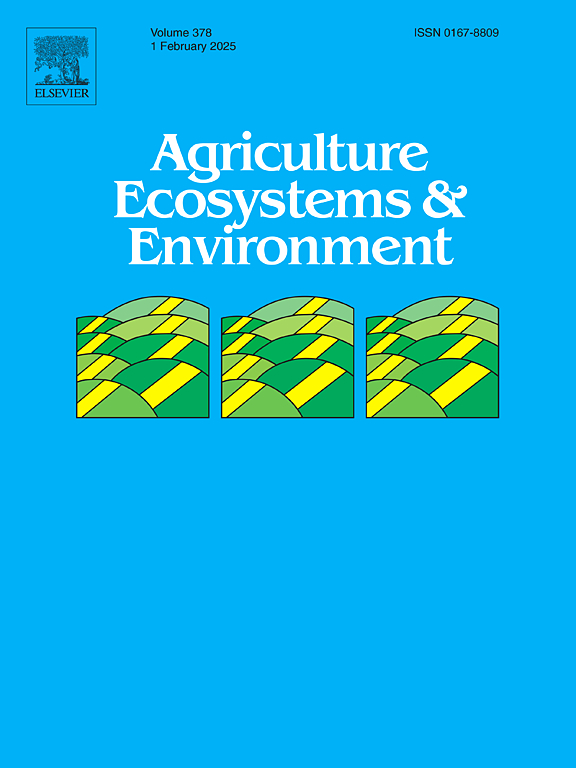Enhancing soil quality and nematode diversity through sustainable tillage and organic fertilization in the Loess Plateau's semi-arid farmlands
IF 6
1区 农林科学
Q1 AGRICULTURE, MULTIDISCIPLINARY
引用次数: 0
Abstract
To explore the impact of tillage and fertilization practices on enhancing the soil micro-ecological environment in the dry farmlands of the Loess Plateau, this study used nematodes as indicator organisms. We investigated the effects of three tillage methods (deep tillage, subsoiling, and no-tillage) and four fertilization methods (no fertilization, full chemical fertilizer, 50 % organic fertilizer substituting chemical fertilizer, and full organic fertilizer) on the soil nematode community and its functions. Our findings indicate that the interaction between tillage and fertilization significantly influenced the soil's total abundance of nematodes and trophic groups. Specifically, the total abundance of nematodes and the relative abundance of bacterial-feeding nematodes were higher under subsoiling in maize and no-tillage in wheat season. Moreover, the energy flux within the food web was more pronounced. Applying chemical fertilizers resulted in greater soil bulk density and a higher proportion of plant parasitic nematodes than other treatments, harming the diversity of soil nematode communities. The nematode community's abundance was positively correlated with alkali-hydrolyzable nitrogen content. In summary, reducing tillage in the wheat-maize annual rotation system, implementing subsoiling in the maize season and no-tillage in the wheat season, combined with organic fertilizer application, can improve soil quality, improve nematode community structure and maintain the stability of the soil food web. This approach positively contributes to improving soil health and ecological stability in the dry farming regions of the Loess Plateau.
求助全文
约1分钟内获得全文
求助全文
来源期刊

Agriculture, Ecosystems & Environment
环境科学-环境科学
CiteScore
11.70
自引率
9.10%
发文量
392
审稿时长
26 days
期刊介绍:
Agriculture, Ecosystems and Environment publishes scientific articles dealing with the interface between agroecosystems and the natural environment, specifically how agriculture influences the environment and how changes in that environment impact agroecosystems. Preference is given to papers from experimental and observational research at the field, system or landscape level, from studies that enhance our understanding of processes using data-based biophysical modelling, and papers that bridge scientific disciplines and integrate knowledge. All papers should be placed in an international or wide comparative context.
 求助内容:
求助内容: 应助结果提醒方式:
应助结果提醒方式:


